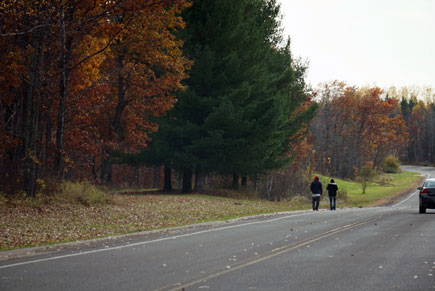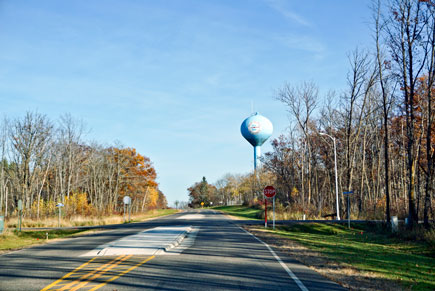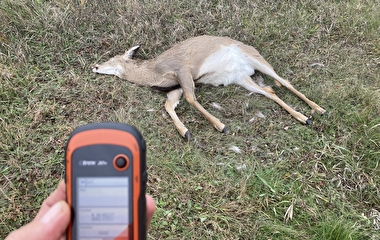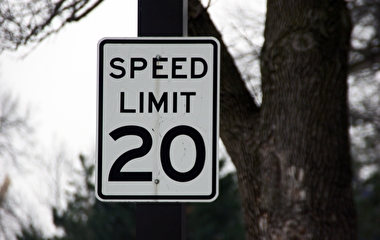The motor vehicle crash fatality rate is higher for American Indians than for any other ethnic or racial group in the United States. Although the number of fatal crashes decreased in the nation as a whole by about 21 percent from 1975–2013, it increased by about 35 percent on American Indian reservation roads.
“These are huge disparities,” says Associate Professor Kathryn Quick. “Clearly, this is an issue that needs to be explored.”
In a project sponsored by the Roadway Safety Institute, Quick and Research Associate Guillermo Narváez, both with the U of M’s Humphrey School of Public Affairs, are collaborating with American Indian communities to better understand the transportation safety risks on tribal lands and develop strategies to mitigate these risks.
Photos: Guillermo Narvaezwork, Quick and Narváez
As part of this have had discussions with 12 tribal governments to explore their transportation concerns. That has grown into collaborations with four tribal governments: the Red Lake Band of Chippewa, Leech Lake Band of Ojibwe, Fond du Lac Band of Lake Superior Chippewa, and Mille Lacs Band of Ojibwe.
In those communities, the researchers have interviewed people responsible for road construction and maintenance, law enforcement, injury prevention, and emergency response on the reservation; professional drivers who know the roads particularly well; and community residents. These interviews have produced rich data, including what local experts know about the sources of risk, how they manage those risks, and what they recommend to improve safety, Quick says. From these participants and from other tribal communities and researchers, Quick and Narváez are also gathering success stories about improving roadway safety.
So far, findings suggest that tribal transportation safety problems may be similar to rural safety problems, except for a much greater concern for pedestrian safety and the complexities of coordinating between tribal governments and other jurisdictions.
In some communities, the research is already leading to practical safety improvements. For example, Kade Ferris, transportation planner with the Red Lake Tribal Engineering Department, says that the researchers’ work has allowed for “an unprecedented and useful integration of disparate types of data into a more comprehensive, robust picture, leading to the development of a comprehensive tribal transportation safety plan for the Red Lake Nation.”
The data have also helped the tribe identify and address specific safety concerns. For example, Ferris says that data collected through this collaboration helped identify pedestrian safety concerns along Minnesota Highway 1, the main east-west highway through the reservation. The tribe then used the data to apply for and receive funding from the state of Minnesota to develop a new walking trail and street lighting to provide a safer walking environment for the reservation’s residents. Quick and Narváez are also working with the Red Lake Band DOT to elaborate a protocol to analyze safe routes to school and support their request for improvement funds.
Tribal transportation leaders and others have not identified alcohol- or drug-impaired driving as a distinguishing, special feature of roadway safety in reservations, Quick notes. “We hear very mixed statements about this. Some people indicate that impairment is not a particular concern. Others indicate that it is, but emphasize they do not see a difference between on- and off-reservation patterns. This indicates that we must take great care in making blanket statements about this, because there is no clear pattern that we can describe at this time,” she says.
Going forward, Quick and Narváez plan to complete their analysis of reservation safety data, expand into non-Minnesota sites, and build research and teaching capabilities about tribal governance at the Humphrey School.




